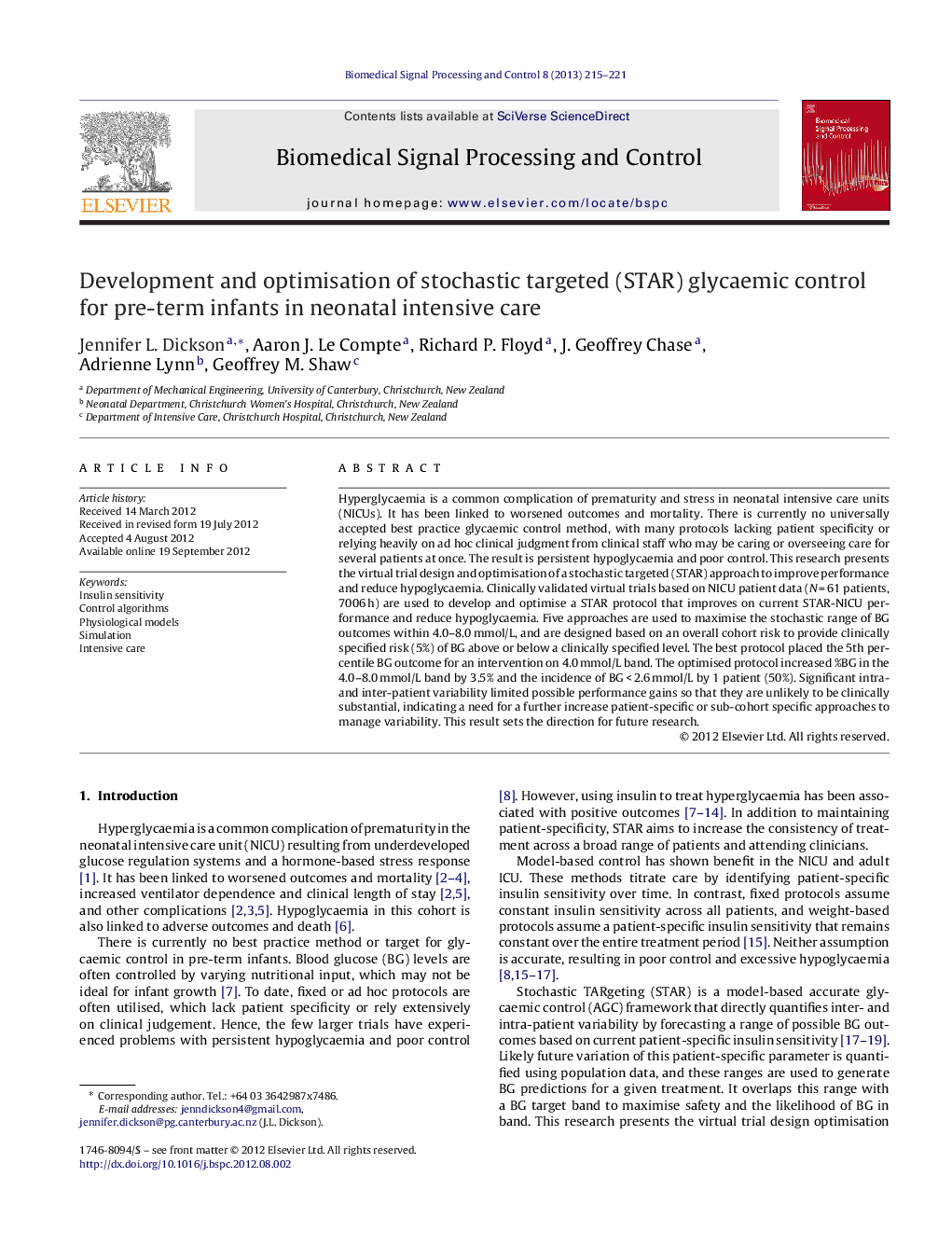| کد مقاله | کد نشریه | سال انتشار | مقاله انگلیسی | نسخه تمام متن |
|---|---|---|---|---|
| 558159 | 874865 | 2013 | 7 صفحه PDF | دانلود رایگان |

Hyperglycaemia is a common complication of prematurity and stress in neonatal intensive care units (NICUs). It has been linked to worsened outcomes and mortality. There is currently no universally accepted best practice glycaemic control method, with many protocols lacking patient specificity or relying heavily on ad hoc clinical judgment from clinical staff who may be caring or overseeing care for several patients at once. The result is persistent hypoglycaemia and poor control. This research presents the virtual trial design and optimisation of a stochastic targeted (STAR) approach to improve performance and reduce hypoglycaemia. Clinically validated virtual trials based on NICU patient data (N = 61 patients, 7006 h) are used to develop and optimise a STAR protocol that improves on current STAR-NICU performance and reduce hypoglycaemia. Five approaches are used to maximise the stochastic range of BG outcomes within 4.0–8.0 mmol/L, and are designed based on an overall cohort risk to provide clinically specified risk (5%) of BG above or below a clinically specified level. The best protocol placed the 5th percentile BG outcome for an intervention on 4.0 mmol/L band. The optimised protocol increased %BG in the 4.0–8.0 mmol/L band by 3.5% and the incidence of BG < 2.6 mmol/L by 1 patient (50%). Significant intra- and inter-patient variability limited possible performance gains so that they are unlikely to be clinically substantial, indicating a need for a further increase patient-specific or sub-cohort specific approaches to manage variability. This result sets the direction for future research.
► Optimisation of a STAR controller to improve time in targeted band by 3.5%.
► The control protocol uses stochastic targeting to a clinically defined band.
► The protocol places the 95th percentile of predictions to a lower band limit.
► Overall performance gains of STAR are likely to be not clinically significant.
► Performance gains were limited by high inter- and intra- patient variability.
Journal: Biomedical Signal Processing and Control - Volume 8, Issue 2, March 2013, Pages 215–221